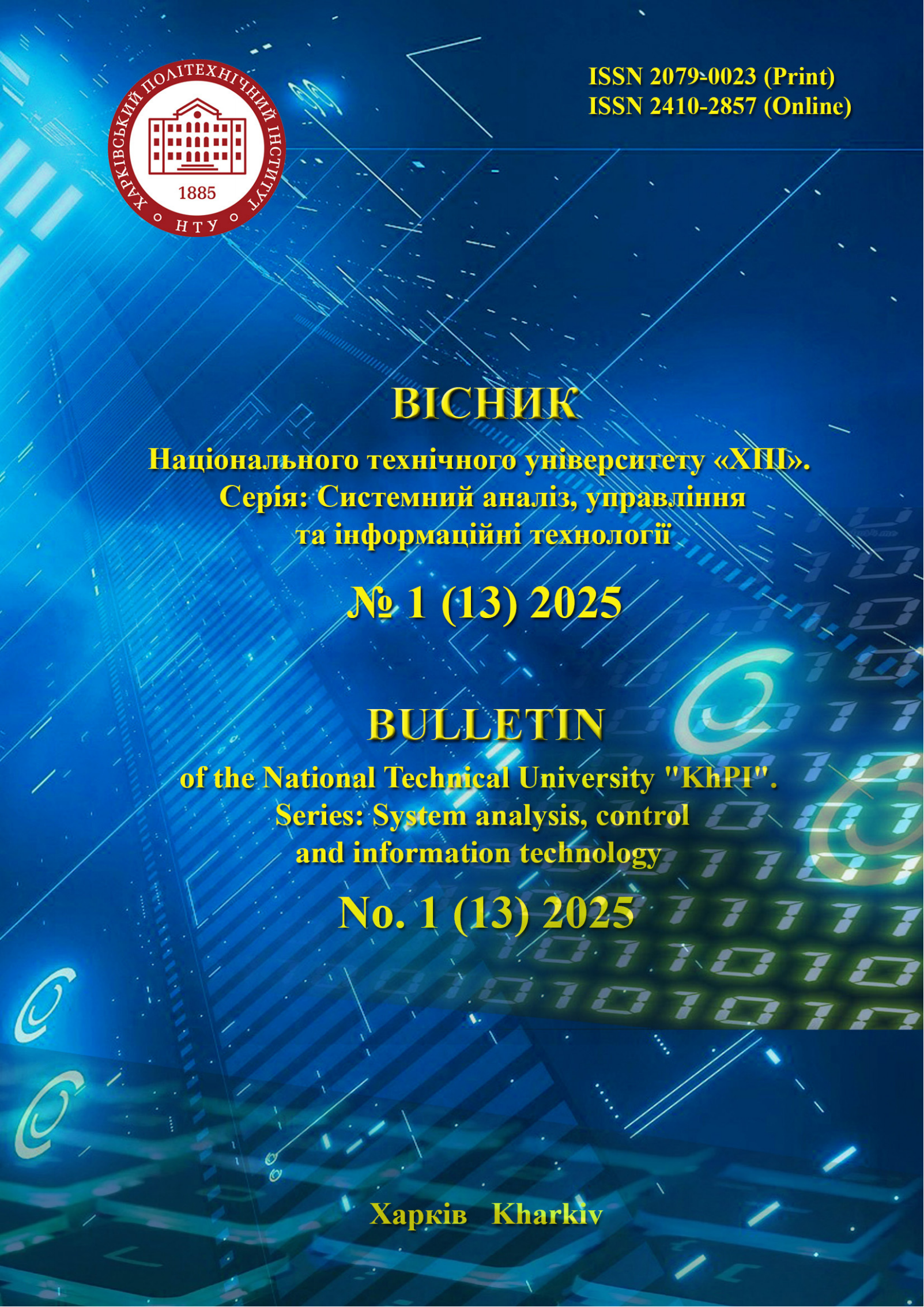INTELLIGENT ANALYSIS OF OPTICAL IMAGES BASED ON A HYBRID APPROACH
DOI:
https://doi.org/10.20998/2079-0023.2025.01.12Keywords:
intelligent image analysis, face recognition, OpenCV, hybrid system, object tracking, computer visionAbstract
The article considers an intelligent approach to real-time analysis of optical images based on a combination of face recognition methods using deep learning and classical computer vision algorithms for tracking them. A system with hybrid approach is proposed that integrates preliminary face recognition based on vector features (embeddings) generated by the FaceNet neural network and face tracking using the CSRT (Channel and Spatial Reliability Tracker) algorithm, which is part of the OpenCV library. The implemented system allows to recognise and automatically identify users in a video stream from a webcam, store new faces in the database, and effectively track identified faces over subsequent frames. The frame processing algorithm is implemented in a multi-threaded mode using queues and thread synchronisation mechanisms to ensure stable operation in real time. To recognise unknown persons, a unique ID is automatically created and their features are added to the common database of emblems. Particular attention is paid to assessing the spatial overlap of detection zones to avoid duplication of trackers when several people are present in the frame at the same time. In addition, the system is implemented as a web service based on Flask, which provides convenient integration with other software modules and the possibility of remote monitoring via a web interface. The proposed hybrid approach combines the accuracy of modern deep learning models with the flexibility of classical tracking algorithms, making the system suitable for use in security systems, smart offices, educational environments, and other areas where accurate face identification in dynamic environments is important. In summary, this paper demonstrates the practical implementation of an intelligent image analysis system that can be adapted to various use cases, including video surveillance, access control, and crowd management systems, as well as research and educational projects.
References
Jiachen Yan, Guang Yang, Weihong Li et al. A Credibility Scoring Algorithm to match surveillance video target and UWB tag. Research Square. 2024. DOI:https://doi.org/10.21203/rs.3.rs-4015518/v1.
Muhammad Indra Ardiawan, Gede Putra Kusuma Negarara. Comparative Analysis of FaceNet, VGGFace, and GhostFaceNets Face Recognition Algorithms For Potential Criminal Suspect Identification. J. Appl. Artif. Intell. 2024, vol. 5, no. 2, pp. 34–49. DOI: 10.48185/jaai.v5i2.1237.
Kumar S. B., Raju V. S., Maheswari U. V. OpenCV libraries for computer vision. Computer Vision: Applications of Visual AI and Image Processing. Boston: De Gruyter. 2023, pp. 1-22.
Poorni R., Charulatha S., Amritha B., Bhavyashree P. Real-time face detection and recognition using deepface convolutional neural network, The Electrochemical Society. 2022, vol. 107 (5091).
Ashley D. Foundation Dynamic Web Pages with Python. Apress: Austin, TX, USA, 2020, p. 213.
Goutam Yelluru Gopal, Maria A Amer. Separable self and mixed attention transformers for efficient object tracking. Proceedings of the IEEE/CVF Winter Conference on Applications of Computer Vision. 2024, pp. 6708–6717.
Xie J., Pang Y. W., Nie, J., Cao, J., Han, J. G. Latent Feature Pyramid Network for Object Detection. IEEE Trans. Multimed. 2023, vol. 25, pp. 2153–2163.
Zaid El Shair, Samir A. Rawashdeh. High Speed Hybrid Object Tracking Algorithm using Image and Event Data. TechRxiv, 2021.
Lin T.-Y., Dollár P., Girshick R., He K., Hariharan B., Belongie S. Feature pyramid networks for object detection. 2017 IEEE Confer-ence on Computer Vision and Pattern Recognition (CVPR), 2017, pp. 936–944.
Scarrica V. M., Panariello C., Ferone A., Staiano A. A hybrid approach to Real-Time Multi-Target Tracking. ArXiV. Computer Science. 2023. DOI: 10.48550/arXiv.2308.01248.
Wojke N., Bewley A., Paulus D. Simple online and realtime tracking with a deep association metric. ICIP. IEEE, 2017, pp. 3645–3649.
Sharma V. K., Kumar V., Sharma S., et al. Python Programming: A Practical Approach. CRC Press. 2021 :213–5.
Downloads
Published
How to Cite
Issue
Section
License

This work is licensed under a Creative Commons Attribution 4.0 International License.
Authors who publish with this journal agree to the following terms:
- Authors retain copyright and grant the journal right of first publication with the work simultaneously licensed under a Creative Commons Attribution License that allows others to share the work with an acknowledgement of the work's authorship and initial publication in this journal.
- Authors are able to enter into separate, additional contractual arrangements for the non-exclusive distribution of the journal's published version of the work (e.g., post it to an institutional repository or publish it in a book), with an acknowledgement of its initial publication in this journal.
- Authors are permitted and encouraged to post their work online (e.g., in institutional repositories or on their website) prior to and during the submission process, as it can lead to productive exchanges, as well as earlier and greater citation of published work (See The Effect of Open Access).


